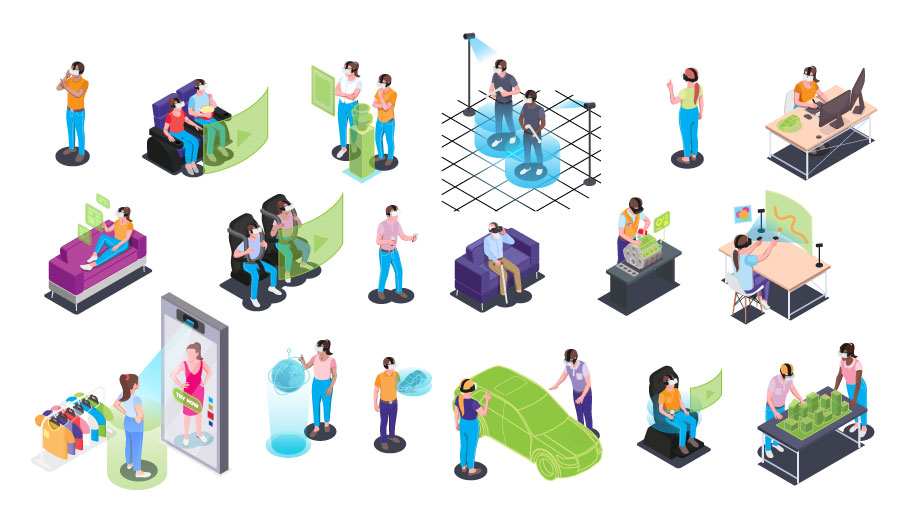Virtual learning has taken the world by storm. As people continue to grow in their comfort of utilizing technology, there will be newfound opportunities to creatively train your team. Augmented or Virtual Reality are two great examples of emerging modalities that will transform the world of training.
Augmented Reality is the overlay of content (such as video, photo, or GPS data) onto the real world using wearable technology or a mobile device. The overlaid content cannot interact with the real world.
Virtual Reality is similar in that it also requires wearable technology. However, VR has the ability to fully simulate a real or imaginary world. AR/VR can solve some – but not all – of your training needs in a virtual working world. Before you adopt these training methods, there are a few things to consider.
Many organizations are already using AR/VR training practices, for example:
- VR can be used for hazard training so teams can safely sample chemicals in what would otherwise be a dangerous environment.
- AR is used in onboarding new hospital team members by simulating an interactive tour of the worksite.
- In order to make AR/VR experiences possible, organizations are using trending tools such as RealWear (which specializes in wearable technology devices) and Roar (which is a cloud-based AR content creation platform).
You might also be able to utilize AR/VR to meet learning outcomes in these areas:
- Design Engineering: Overlaying a schematic on an existing structure or foundation to pinpoint potential design or structural issues.
- Biotech/Medical Device Training: Demonstrating the use of new medical devices without endangering patients.
AR/VR does present challenges for some training topics:
- Communication Skills: When participants are in two locations and trying to practice soft skills, technology can hinder growth. In-person, soft-skill training that’s guided by a facilitator is a better option.
- Technical Training: It might be fun to gamify software development, for example, but this could deter participants from actually learning the software itself.
Before you implement AR/VR into your training program, ask yourself:
- Is this right for my training needs? Consider the current uses and challenges of AR/VR listed above. If covering your training topic via AR/VR would present more barriers than opportunities, you may need to seek out another creative solution.
- Who is my audience? AR/VR doesn’t work for everyone. If people within your organization have made you aware of vision, inner ear, or other medical conditions that would inhibit their ability to interact with the wearable technology, you’ll want to find a more accessible training platform.
- Do I have time to do this right? AR/VR training modules can take anywhere from one month to one year to develop.
- Do I have the budget? AR/VR can be expensive. From the equipment to the program development, you’ll want to ensure you can cover all costs.
A well-trained team will expand your organization’s impact, if used strategically, AR/VR is a great way to keep your team engaged while evolving their skill set. For a deeper dive into the practical applications of AR/VR click here. If you have any questions about how to implement these emerging modalities into your learning curriculum schedule a consult with us today!

